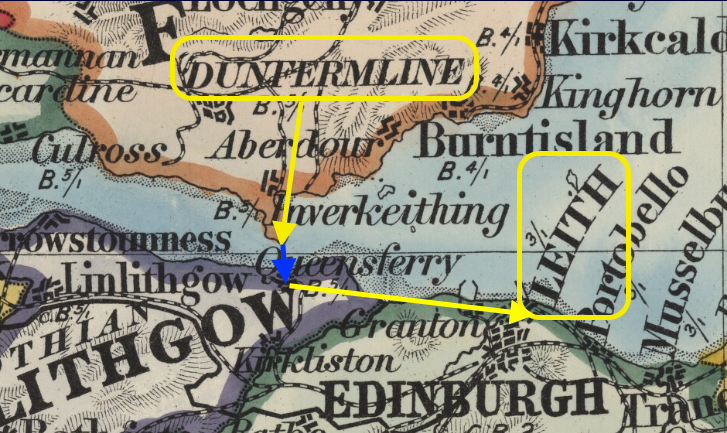This humble-looking building, 4 Abbey Park Place, can tell us more about the local cloth industry, and specifically the commercial relationship between the town and the USA.
In 1871, Dunfermline was at the peak of production for linen and America was the main market. The nearest consulate where the necessary shipping documentation could be approved was in Leith, by Edinburgh. That meant a 34-mile journey from Dunfermline to Leith for the exporters twice a week – there was no bridge across the Forth at the time – so, perhaps not surprisingly, they suggested a new approach.
Armed with data from the 1870s, exporters showed that out of 2000 shipments from Scotland, over 800 originated from Dunfermline. Their argument was persuasive and within a month, in 1881, a decision was made to open a local Consulate Office for Dunfermline’s exports to America. The office was in St Margaret’s Hall, which was just round the corner behind the library, although it relocated in 1908 to 4 Abbey Park Place.
By 1901, cloth exports had reached a value of over $1.3million dollars, representing around 804 invoices being processed in a year– the majority for linen. The nearby town of Kirkcaldy had followed Dunfermline’s lead and also persuaded the US to open a local Notary Public office to approve their exports, submitting 476 invoices in 1901.
Dunfermline’s Consulate Office moved to various locations over the years but eventually closed in 1925 when the town’s exports to the States had dwindled. The final location was 57 Buffies Brae.
Did you know?
As well as the cloth industry, Dunfermline’s links with the USA were further strengthened by Dunfermline-born Andrew Carnegie. Carnegie changed the landscape of America with his expansion of the steel industry, the building of new bridges, and the funding of thousands of libraries and educational bodies.

